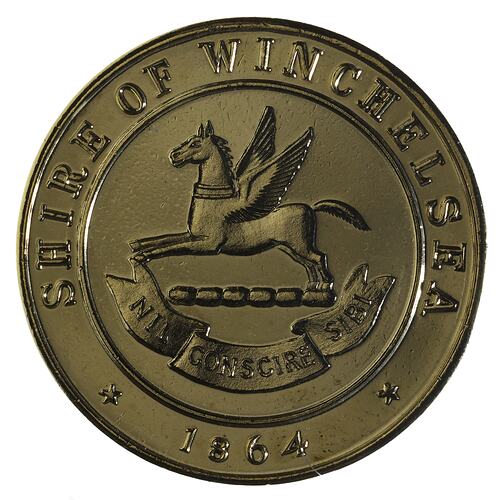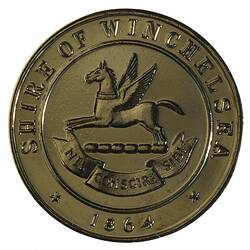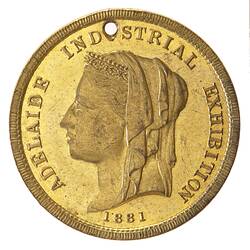The Winchelsea district is located located on the Barwon River, 112 km south-west of Melbourne, between Geelong and Colac. About 10km north-west of the town of Winchelsea lies Lake Murdeduke, situated in an area of low relief on the western volcanic plains.
The first Europeans to reside in the Winchelsea area were squatters who established grazing runs around 1837. One of these was Mount Hesse, established by William Harding and John Highett. It was subdivided in 1853. Wormbete was also settled in 1837, by Tasmanian merchant and philanthropist Henry Hopkins.
The name Winchelsea derived from an English seaport notorious for smugglers.
The township of Winchelsea, by the Barwon River, dates from 1842, when Prosper Nicholas Trebeck and Charles Beal built the Barwon Hotel by a river crossing, on the coaching route between Geelong and Warrnambool. A general store was also built in the vicinity, and in the same year Ingleby pastoral station near Winchelsea was established by pioneer, George Armytage. His first house was replaced in 1860 by a two-storied bluestone homestead designed by architect Edward Prowse.
The first church in the town was built with the help of the local grazier, Thomas Austin, in 1846. Austin was a noted and wealthy sheep-breeder, and was the first to import Lincoln sheep. His wife, a great benefactor, founded the Austin Hospital in Melbourne. Austin loved shooting and, in 1859, he imported quails, pheasants, foxes and rabbits for that purpose. He was responsible, in the eyes of many, for Australia's substantial rabbit problems. The rabbits bred so quickly that the Duke of Edinburgh's 1867 hunting party shot between 400 and 1000 rabbits (depending on the report) in one afternoon. Shooters were soon hired to eradicate the vermin and a rabbit-meat factory even operated for a time at Colac. Austin himself continued to live well, building a 42-room Italiante mansion, Barwon Park, in 1869, designed by architects Davidson and Henderson of Geelong.
The Shire of Winchelsea was proclaimed on 27 May 1864.
The Duke of Edinburgh also had official duties to attend during his visit to the Shire of Winchelsea in 1867. He opened a new Barwon River Bridge at Winchelsea, erected for the Council of the Shire of Winchelsea, replacing an earlier timber structure of 1849. The three span arch structure was built of bluestone by James Sinclair at the cost of 4,602 pounds.
Local infrastructure continued to develop. In 1883 a Colonial Bank was built to the designs of architect George Jobbins.
Albert Jacka, the first Australian to win a Victoria Cross in World War I, and later mayor of St Kilda, was born at Winchelsea is 1893. Jacka killed seven Turkish soldiers at Gallipoli in 1915 after four of his comrades had been killed or wounded.
The Winchelsea Shire Council issued a medal in 1985 to commemorate the sesquicentenary of Victoria (NU 20717).
On 9 March 1994 part of the Shire of Winchelsea, the Shire of Barrabool and the former municipality of Torquay (which had been part of the City of Greater Geelong in 1993-1994) united to form the Surf Coast Shire Council.
References:
Municipal Association of Victoria website http://www.mav.asn.au
Blake, L. (1977). Place Names of Victoria.
Fairfax Walkabout website http://www.walkabout.com.au/locations/VICWinchelsea.shtml
Australian Heritage Places Inventory website http://www.heritage.gov.au/cgi-bin/ahpi/record.pl?RNE3701
More Information
-
Keywords
-
Localities
-
Authors
-
Article types


